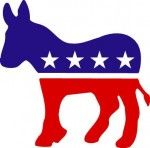What’s Left: Where My Jobs At?

If you approach any economist on the street and ask him how the business cycle fits into a capitalist economic system, he will, apart from looking rather gloomy, answer that the cycle, or “economic fluctuation” as he would call it (cycle implying a sense of regularity), cannot be explained by a theory with any consensus among economists.
In fact, if you had asked him 10 years earlier, chances are that he would laugh in your face.
He would tell you rather condescendingly that advances in macroeconomic theory had given us the understanding and tools to ward off extended recessions (this attitude is reflected by the notable economist Robert Lucas who remarked that the problem had been “solved for many decades” in a speech to the American Economic Association). It’s tough to rationalize the recurring ghost of capitalism. So with economists looking rather like the hen that cackles before laying the egg, where does that leave us? Certainly without a lot of clever moves. The American people have essentially two tools to influence the macroeconomic trend of the American economy.
We have the Federal Reserve, which has the ability to control interest rates and the money supply (think QE2), and we have the Federal government, which essentially has the ability to reallocate money in the economy (from taxes to government expenditures) and to regulate. Things seemed to be going well after the government infusion of money into the economy from the American Recovery and Reinvestment Act: our economy grew, investors were hopeful, everything seemed a little more positive. Could we apply these same principles again to stimulate job growth?
Enter the American Jobs Act (AJA), announced by President Obama two weeks ago. A bold proposal by any measure, the $447 billion package includes a combination of tax cuts and spending. There’s no need to slap your forehead and check the national debt clock either; the package is part of President Obama’s comprehensive deficit reduction plan which promises to cut $3 trillion from the deficit gap over the next decade.
But is this money going to the right places? If we are hoping to alleviate the two worst problems in our economy right now – unemployment and stagnation in small businesses – than the AJA makes several positive steps. The tax cuts don’t discriminate between businesses and individuals: small businesses will get their payroll tax rate halved – completely eliminated for those who add workers – while cutting payroll taxes in half for workers. The plan also includes a $4,000 tax credit to companies that hire workers who have been unemployed for extended periods of time and a mechanism that would allow families to refinance their mortgages at lower rates.
On the expenditures side, government loans will provide for construction on schools, bridges and other public goods, as well as expanding high-speed broadband access to more communities. Ultimately, it will take nothing shy of a miracle to pass this bill. With words like “spending” and “stimulus” as unpopular as “big government,” it seems that the war of words has been won by Republicans at the expense of any form of a plan to help the unemployed or our economy.
Even the proposals that Republicans viewed favorably before now are foreign and undesirable to them. It’s easy to reject something because it isn’t ideologically pure. But often these amalgams of pragmatic ideas are the most effective. Personally, I don’t think cutting taxes is a fantastic idea with the situation our deficit is in.
But I recognize the difference between the short term and the long term – if we can’t achieve sustained growth in the economy, tax revenues across the board will suffer. If I have to be satisfied with a bill that empowers businesses and individuals to make moves in the right direction, well, that certainly works for me.
Contact Nate Lynch at [email protected]








